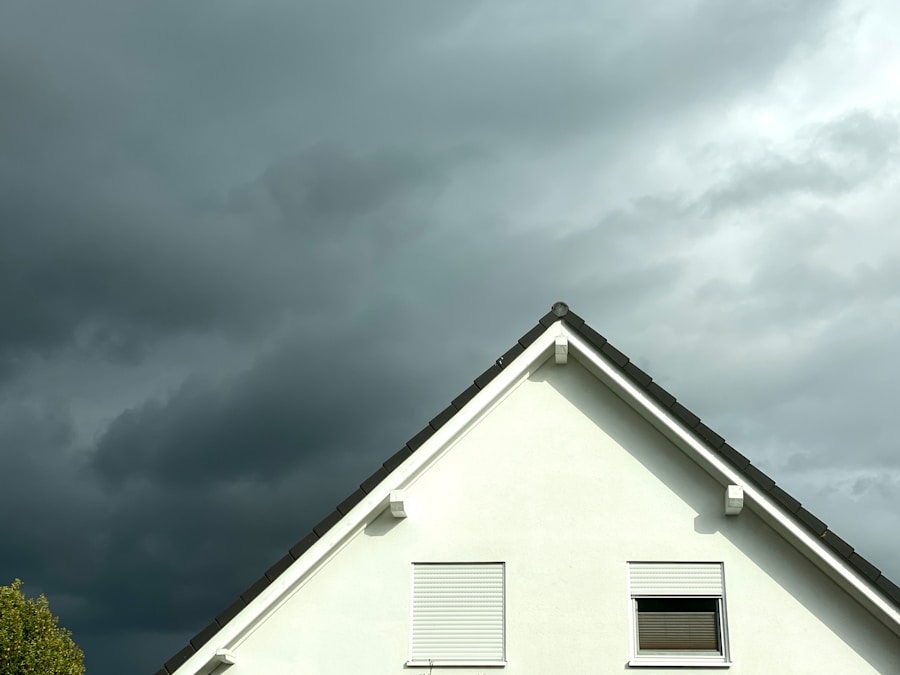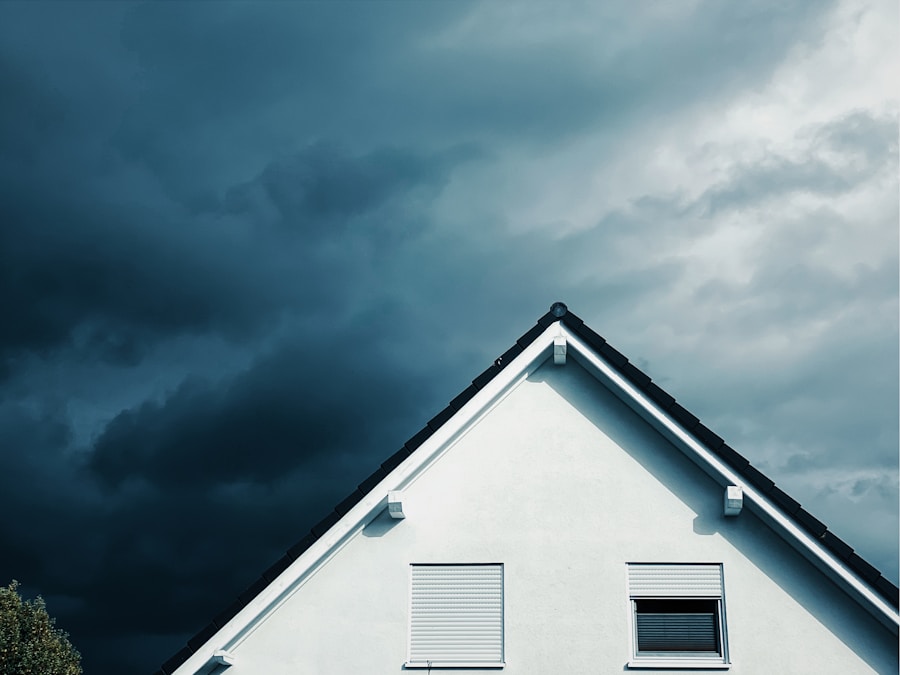The location of a home plays a pivotal role in determining its insurance premiums and coverage options. Homes situated in urban areas often face higher insurance costs due to increased risks associated with theft, vandalism, and natural disasters. For instance, a house located in a bustling city like New York or Los Angeles may attract higher premiums compared to a similar property in a rural setting.
Urban environments typically have a higher population density, which can lead to more frequent claims related to property damage or theft. Additionally, the proximity to fire departments, hospitals, and police stations can influence insurance rates; homes closer to these services may benefit from lower premiums due to reduced response times in emergencies. Conversely, homes in rural areas may encounter different challenges.
While they might enjoy lower insurance rates due to reduced crime rates, they could be at greater risk for natural disasters such as floods, wildfires, or tornadoes, depending on the geographical location. For example, a home situated in a flood-prone area may require additional flood insurance, which can significantly increase overall costs. Furthermore, the availability of local resources for disaster response can also impact insurance rates; homes in remote locations may face higher premiums due to longer response times from emergency services.
Therefore, understanding the nuances of location is essential for homeowners when assessing their insurance needs.
Key Takeaways
- Location of the home plays a crucial role in determining insurance rates
- The age and condition of the home can impact the cost of insurance
- Type of coverage and policy limits should be carefully considered to ensure adequate protection
- The value of personal property should be accurately assessed for proper coverage
- Security features and safety measures can lead to potential discounts on insurance premiums
Age and Condition of the Home
The age and condition of a home are critical factors that insurers consider when determining coverage and premiums. Older homes often come with unique challenges, such as outdated electrical systems, plumbing issues, or structural concerns that can increase the likelihood of claims. For instance, a home built in the early 20th century may have outdated wiring that poses a fire hazard, leading insurers to charge higher premiums or even require upgrades before providing coverage.
Insurers typically assess the condition of the home through inspections, which can reveal potential risks that need to be addressed. In contrast, newer homes generally benefit from modern construction standards and materials that enhance safety and durability. These homes are often built with updated technology that meets current building codes, which can lead to lower insurance premiums.
For example, a newly constructed home equipped with energy-efficient appliances and advanced safety features may qualify for discounts on homeowners insurance. However, it is essential for homeowners to maintain their properties regardless of age; neglecting maintenance can lead to deterioration and increased risk of damage, ultimately affecting insurance costs and coverage options.
Type of Coverage and Policy Limits

When selecting homeowners insurance, understanding the type of coverage and policy limits is crucial for ensuring adequate protection. There are several types of coverage available, including dwelling coverage, personal property coverage, liability coverage, and additional living expenses coverage. Dwelling coverage protects the physical structure of the home against perils such as fire, windstorm, or vandalism.
Personal property coverage safeguards belongings within the home, while liability coverage protects homeowners from legal claims arising from injuries or damages occurring on their property. Policy limits refer to the maximum amount an insurer will pay for covered losses. Homeowners must carefully evaluate their policy limits to ensure they align with the value of their home and personal property.
For instance, if a homeowner underestimates the value of their possessions and selects a lower personal property limit, they may face significant out-of-pocket expenses in the event of a loss. Additionally, some policies offer replacement cost coverage, which pays for the cost to replace damaged items without depreciation deductions. Homeowners should consider their unique circumstances and consult with insurance professionals to tailor their coverage effectively.
Value of Personal Property
The value of personal property is another significant factor influencing homeowners insurance premiums and coverage options. Homeowners must accurately assess the worth of their belongings to ensure they have sufficient coverage in place. This includes not only furniture and appliances but also valuable items such as jewelry, art collections, electronics, and collectibles.
Many insurers recommend conducting a home inventory to document possessions and their estimated values. This inventory can serve as a valuable resource when filing claims and can help homeowners avoid underinsurance.
Standard homeowners insurance policies often have limits on certain categories of personal property, such as jewelry or fine art. For example, if a homeowner possesses a valuable painting worth $10,000 but their policy only covers $2,500 for art, they would face significant financial loss if that painting were damaged or stolen. To address this gap in coverage, homeowners may need to purchase additional riders or endorsements that provide higher limits for specific items or categories.
Security Features and Safety Measures
The presence of security features and safety measures within a home can significantly impact insurance premiums and coverage options. Insurers often reward homeowners who invest in security systems with lower premiums due to the reduced risk of theft or damage. Common security features include alarm systems, surveillance cameras, deadbolt locks, and motion-sensor lighting.
For instance, a homeowner who installs a comprehensive security system that includes 24/7 monitoring may qualify for substantial discounts on their insurance policy. In addition to security systems, other safety measures can also influence insurance rates. Homes equipped with fire alarms, sprinkler systems, and fire-resistant materials are often viewed more favorably by insurers.
These features not only enhance the safety of the home but also reduce the likelihood of catastrophic losses due to fire or other hazards. Homeowners should communicate any safety upgrades made to their properties with their insurance providers to ensure they receive appropriate discounts and benefits.
History of Claims and Credit Score

A homeowner’s history of claims can significantly affect their insurance premiums and eligibility for coverage.
For example, if a homeowner has filed multiple claims for water damage over several years, insurers may view this as a pattern that suggests ongoing issues with plumbing or drainage systems.
As a result, they may charge higher rates or impose stricter conditions on future policies. In addition to claims history, credit scores also play a crucial role in determining insurance premiums. Many insurers use credit-based insurance scores as part of their underwriting process; studies have shown that individuals with lower credit scores are more likely to file claims than those with higher scores.
Consequently, homeowners with poor credit may face higher premiums as insurers perceive them as higher-risk clients. It is essential for homeowners to maintain good credit by managing debts responsibly and paying bills on time; this not only benefits their financial health but can also lead to more favorable insurance rates.
Presence of Additional Structures or Amenities
The presence of additional structures or amenities on a property can influence homeowners insurance coverage and premiums significantly. Structures such as garages, sheds, fences, pools, or guest houses add value to a property but also introduce additional risks that insurers must consider. For instance, a swimming pool increases liability exposure due to the potential for accidents or injuries; therefore, homeowners with pools may face higher premiums compared to those without such amenities.
Moreover, additional structures require separate consideration in terms of coverage limits. Standard homeowners policies typically cover detached structures at a percentage of the dwelling coverage limit; however, homeowners should assess whether this amount is sufficient based on the value of these structures. If a homeowner has invested significantly in an outdoor kitchen or custom-built shed, they may need to adjust their policy limits accordingly to ensure adequate protection against potential losses.
Local Environmental Factors
Local environmental factors play an essential role in shaping homeowners insurance policies and premiums. Geographic location can expose homes to various risks such as floods, earthquakes, hurricanes, or wildfires; understanding these risks is crucial for homeowners when selecting appropriate coverage options. For example, homes located in coastal areas are often at higher risk for hurricane damage and may require specialized windstorm or flood insurance policies.
Additionally, local environmental factors can influence building codes and construction practices within communities. Areas prone to earthquakes may have stricter building regulations designed to enhance structural integrity during seismic events; homes built according to these codes may qualify for lower insurance rates due to reduced risk exposure. Homeowners should stay informed about local environmental risks and work closely with their insurance providers to ensure they have adequate protection tailored to their specific circumstances.
In summary, various factors contribute to determining homeowners insurance premiums and coverage options. From location and age of the home to personal property value and local environmental risks, each element plays a vital role in shaping an effective insurance strategy tailored to individual needs and circumstances. Understanding these factors allows homeowners to make informed decisions about their insurance policies while ensuring adequate protection against potential risks.
If you are looking to understand what factors can increase the cost of home insurance, you may want to check out this article on how auto insurance claims can impact your home insurance rates. This article delves into the relationship between filing auto insurance claims and the potential increase in home insurance premiums. Understanding these interconnected factors can help you make informed decisions when it comes to managing your insurance costs.
FAQs
What factors can increase the cost of home insurance?
Some factors that can increase the cost of home insurance include the location of the home, the age and condition of the home, the coverage amount, the deductible amount, the homeowner’s claims history, and the presence of certain high-risk features such as a swimming pool or trampoline.
How does the location of the home affect the cost of home insurance?
The location of the home can affect the cost of home insurance due to factors such as the risk of natural disasters (such as hurricanes, earthquakes, or wildfires), the crime rate in the area, and the proximity to a fire station.
How does the age and condition of the home affect the cost of home insurance?
Older homes or homes in poor condition may cost more to insure due to the increased risk of damage or maintenance issues. Upgrades such as a new roof, electrical, or plumbing systems can help reduce insurance costs.
How does the coverage amount affect the cost of home insurance?
The higher the coverage amount, the higher the cost of home insurance. This is because the insurance company will have to pay out more in the event of a claim.
How does the deductible amount affect the cost of home insurance?
A lower deductible typically results in a higher premium, while a higher deductible can lower the premium. This is because a lower deductible means the insurance company will have to pay out more in the event of a claim.
How does the homeowner’s claims history affect the cost of home insurance?
Homeowners with a history of filing frequent or expensive claims may be seen as higher risk and may face higher insurance premiums.
How do high-risk features such as a swimming pool or trampoline affect the cost of home insurance?
High-risk features such as a swimming pool or trampoline can increase the cost of home insurance due to the potential for accidents and liability claims. Insurers may require additional coverage or charge higher premiums for homes with these features.


